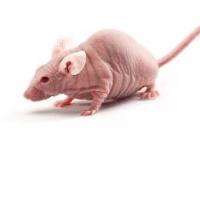How to Study Pathologic Phenotypes of Knockout Mice
互联网
702
It has become increasingly clear that when one knocks out a gene it is almost always impossible to predict the resultant phenotype. One must be prepared to look at every organ at every stage of development, from earliest embryonic life to old age. With any luck the knockout (KO) mice will have an obvious phenotype, such as an absent tail. Often the KO mice will have no apparent phenotype or will sicken and die prenatally, right after birth, during the first days or weeks of life, or later in life. The phenotype is critical. Thus, if a mutant is found to have no corpus callosum, that discovery can be published even if no one has figured out why the pups die shortly after birth (1 ). On the other hand, no one is interested in a mutant that simply dies or that has no phenotype. A common occurence is to make or acquire a second KO and to breed it with the first KO mice to make a double mutant. Sometimes breeding the mutated gene onto another genetic background by repeated backcrossings (i.e., making a new congenic strain) brings out a phenotype, as many genes are now known to be or are suspected to be modified by other genes.









